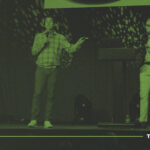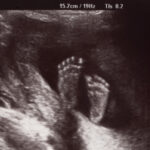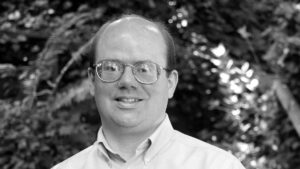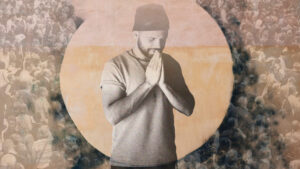This article is adapted from The Great Dechurching: Who’s Leaving, Why Are They Going, and What Will It Take to Bring Them Back? by Jim Davis and Michael Graham. This article is published in partnership with Zondervan Reflective.
As a nation, we’re currently experiencing the largest and fastest religious shift in the history of the United States. Tens of millions of formerly regular Christian worshipers nationwide have decided they no longer desire to attend church at all. These are what we now call the dechurched.
About 40 million adults (16 percent) in America today used to go to church but no longer do. For the first time in the eight decades that Gallup has tracked American religious membership, more adults in the United States don’t attend church than attend church. This isn’t a gradual shift; it’s a jolting one.
The rapid decline in church attendance is startling. Soon the number of dechurched will exceed the number of unchurched—those who never attended church to begin with. In The Great Dechurching: Who’s Leaving, Why Are They Going, and What Will It Take to Bring Them Back, we take an in-depth look at the dechurching phenomenon. The statistical results of the surveys are shocking. Yet the analysis offers more hope than many would have expected.
Historical Context
There have been three main periods of rapid growth in religious adherence in the United States: the First Great Awakening (1730s–40s), the Second Great Awakening (1790–1840), and the four decades following the Civil War (1870–1906).
For the first time in eight decades, more adults in the United States don’t attend church than attend church.
From 1700 to 1776, religious adherence grew in the U.S. from 10 percent to 17 percent. Interestingly, and perhaps contrary to popular opinion, “Historians of American religion have long noted that the colonies did not exude universal piety. There was general agreement that in the colonial period no more than 10–20 percent of the population actually belonged to a church.” Finke and Stark estimate the national religious adherence rate to be 17 percent in 1776, with 3,228 congregations and an estimated 242,100 members. Rates of religious adherence rose significantly between 1776 and 1850, from 17 percent to 34 percent, primarily due to the Second Great Awakening.
Despite this rapid growth, the fastest period of growth in religious adherence was the 25-year period after the Civil War. From 1870 to 1895, church attendance more than doubled, from 13.5 million people to 32.7 million, as the general population grew from 38.6 million to 69.6 million people. The net result was a 12 percent increase in churchgoers. Because this growth happened in the short span of only 25 years, it became the largest religious shift in the history of our country until now.
What we’ve witnessed in the last 25 years is a religious shift about 1.25 times larger in the opposite direction. More people have left the church in this period than all the new people who became Christians from the First Great Awakening, Second Great Awakening, and Billy Graham crusades combined. This alarming phenomenon has rapidly increased since the mid-1990s.
Ongoing Seismic Shift
Churchgoing in the U.S. changed starkly in the 1990s. As Ryan Burge writes,
The early 1990s was an inflection point for American religion. Between the early 1970s and 1990s, the share of Americans who had no religious affiliation had only risen two points. But from that point forward, the “nones” would grow by a percentage point or two nearly every year through the following three decades.
Here the term “nones” refers to individuals with no religious affiliation.
So what happened? While there’s room for nuance on the acceleration of dechurching in the 1990s, three factors cannot be overlooked.
First, during the Cold War, the terms “American” and “Christian” were often used synonymously in our struggle against a nation that posed an existential threat to America’s way of life. President Ronald Reagan called the Soviet Union “the Evil Empire.” During this period, we added “In God We Trust” to our currency and “under God” to our Pledge of Allegiance. When the Soviet Union collapsed and that struggle ended, it became more culturally acceptable to be both American and non-Christian.
Second, there was fallout from an increasingly polarized Religious Right. Under the influence of Jerry Falwell’s Moral Majority, Pat Robertson’s challenge to the George Bush GOP, and Newt Gingrich’s uncompromising takeover of the House, Americans in the middle associated Christianity exclusively with these movements and began to let go of all of it. The formerly religious middle began to join the budding ranks of the nones.
Third, we cannot overstate the influence of the internet in driving the acceleration of dechurching in America. Even though the internet was slow and, according to the Census Bureau, only in 20 percent of American homes by 1997, students had access in schools. In 1994 the internet cafe was born, and the first internet connections in public libraries became available. For the first time, people could easily and regularly engage a wide range of worldviews vastly different from their own and collaborate in communities with others questioning their faith without the risk of social and familial opposition.
Hope amid the Rubble
The size and scope of this shift away from church is unprecedented in our country. Dechurching is an epidemic and will affect both the institutions of our country and the very fabric of our society within our lifetime. This seismic shift in religious belief and church attendance is a new era in American history we call the Great Dechurching.
Dechurching is an epidemic and will affect both the institutions of our country and the very fabric of our society within our lifetime.
The erosion of the religious foundation of 40 million people will have widespread reverberations. The greatest concern is that many fewer people will have the opportunity to organically hear the gospel in local churches on a given Sunday morning.
But there’ll be social effects as well. One study notes that religiously affiliated nonprofits make up 40 percent of the social safety net in America. Dechurching is likely to deplete resources for these efforts. The relationships and sense of community that churches provide will be diminished as fewer people gather regularly to worship. The net result of dechurching could be diminished human flourishing, connectivity, cohesiveness, and overall shalom.
While the situation sounds bleak, there are plenty of reasons for hope. When they were surveyed, around 51 percent of dechurched evangelicals said they were either somewhat willing or very willing to go back to church. The keys to addressing the Great Dechurching will be whether churchgoing people are willing to seek understanding, relate with wisdom, build healthier institutions, embrace our exile nature, and seek a true, good, and beautiful gospel.
“The Most Practical and Engaging Book on Christian Living Apart from the Bible”
 “If you’re going to read just one book on Christian living and how the gospel can be applied in your life, let this be your book.”—Elisa dos Santos, Amazon reviewer.
“If you’re going to read just one book on Christian living and how the gospel can be applied in your life, let this be your book.”—Elisa dos Santos, Amazon reviewer.
In this book, seasoned church planter Jeff Vanderstelt argues that you need to become “gospel fluent”—to think about your life through the truth of the gospel and rehearse it to yourself and others.
We’re delighted to offer the Gospel Fluency: Speaking the Truths of Jesus into the Everyday Stuff of Life ebook (Crossway) to you for FREE today. Click this link to get instant access to a resource that will help you apply the gospel more confidently to every area of your life.




































